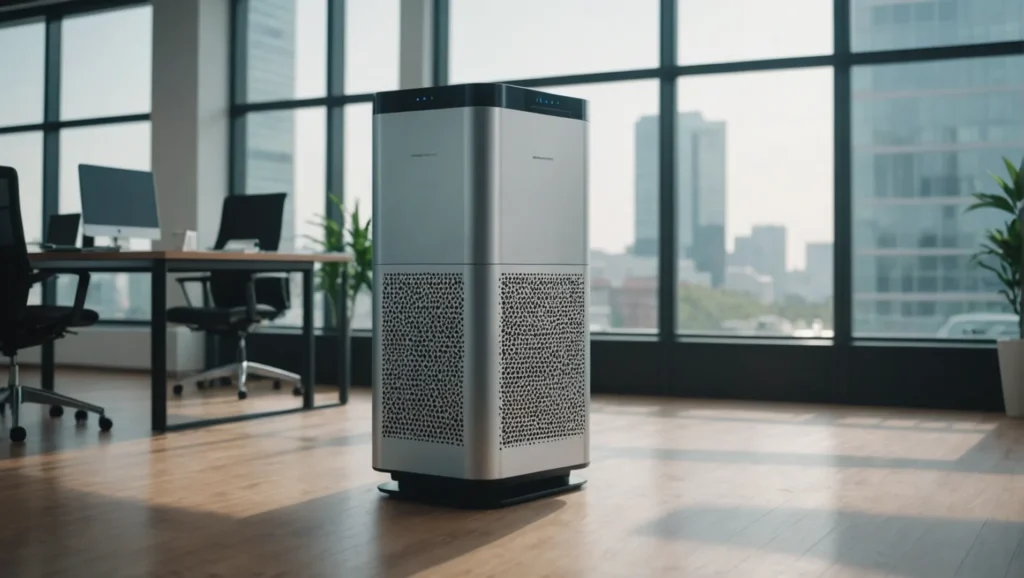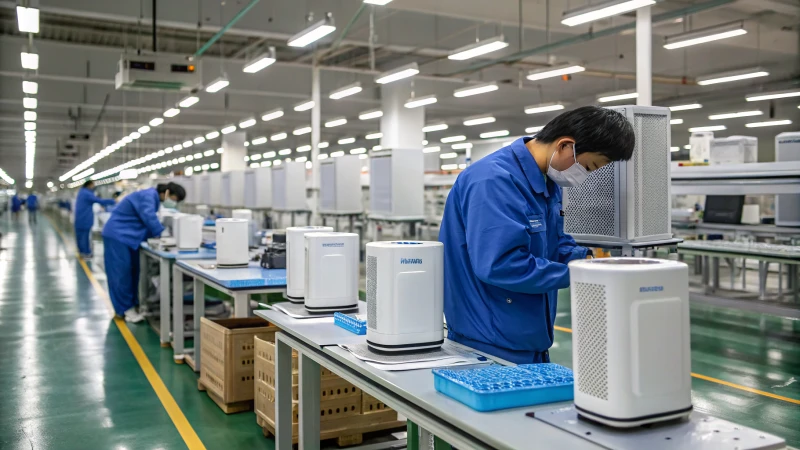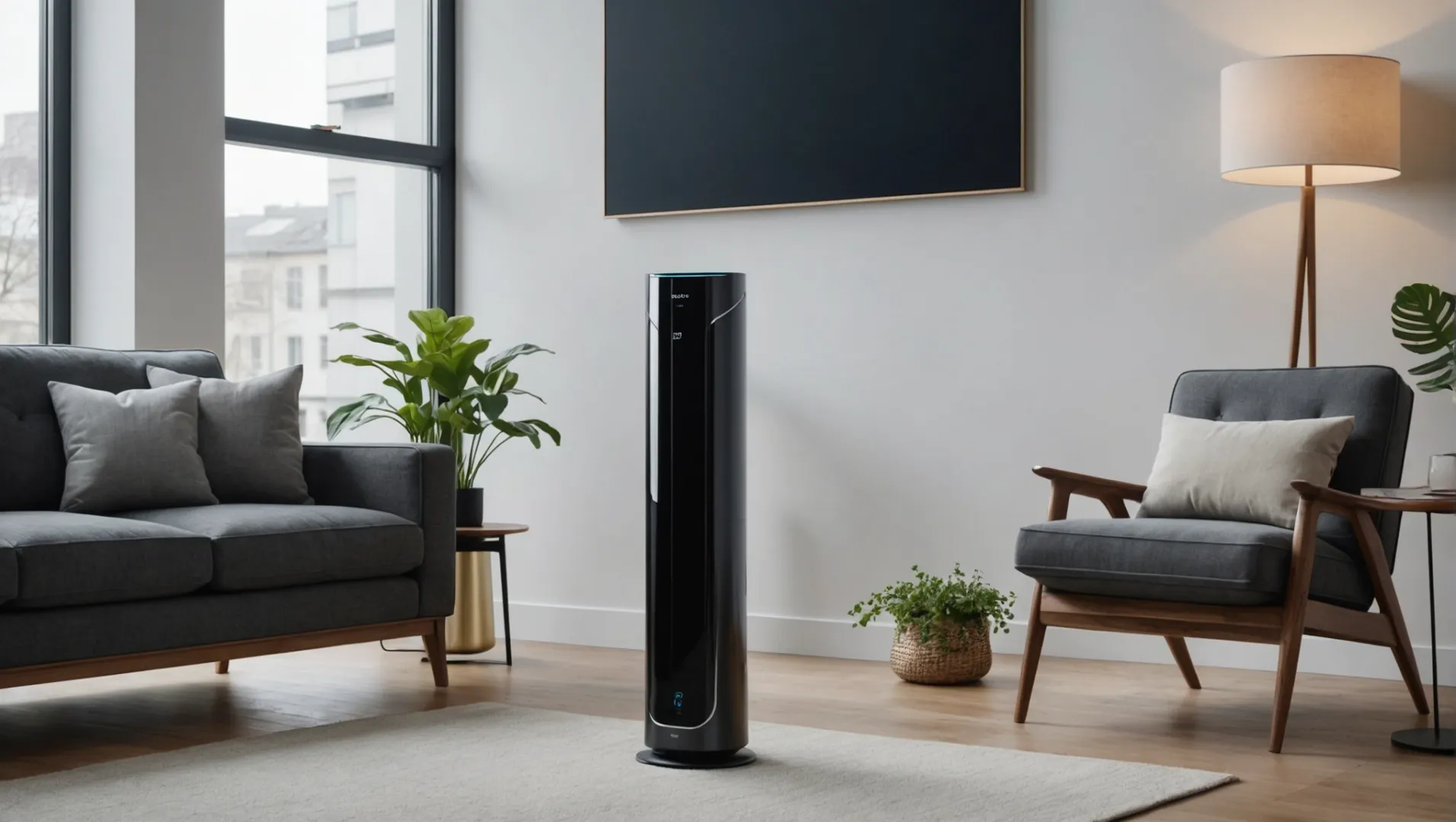
Imagínese entrar en su casa y experimentar una rápida sensación de frescor. Esa es la maravilla IoT ¡y AI introduce a los purificadores de aire!
IoT y la IA mejoran los purificadores de aire al permitir la monitorización en tiempo real, los ajustes automáticos basados en los datos de calidad del aire y la mejora de la eficiencia energética. Estas tecnologías garantizan una calidad del aire óptima, proporcionando un entorno de vida más saludable y confortable.
Todo el mundo sabe lo que hace un simple purificador de aire. IoT y la IA lo cambian todo. Estos emocionantes cambios traen consigo muchas funciones nuevas. Los purificadores de aire modernos ahora funcionan de forma más inteligente que antes.
Los purificadores de aire IoT ofrecen monitorización de la calidad del aire en tiempo real.Verdadero
La tecnología IoT permite la observación constante y la recopilación de datos para los purificadores de aire.
¿Cuáles son las principales funciones de IoT en ¿Purificadores de aire?
Descubre cómo IoT connection cambia los filtros de aire, mejorando su rendimiento y facilidad de uso.
IoT-cuentan con monitorización en tiempo real, control remoto, optimización energética e integración con otros sistemas domésticos inteligentes, lo que garantiza una mejor calidad del aire y una mayor comodidad.
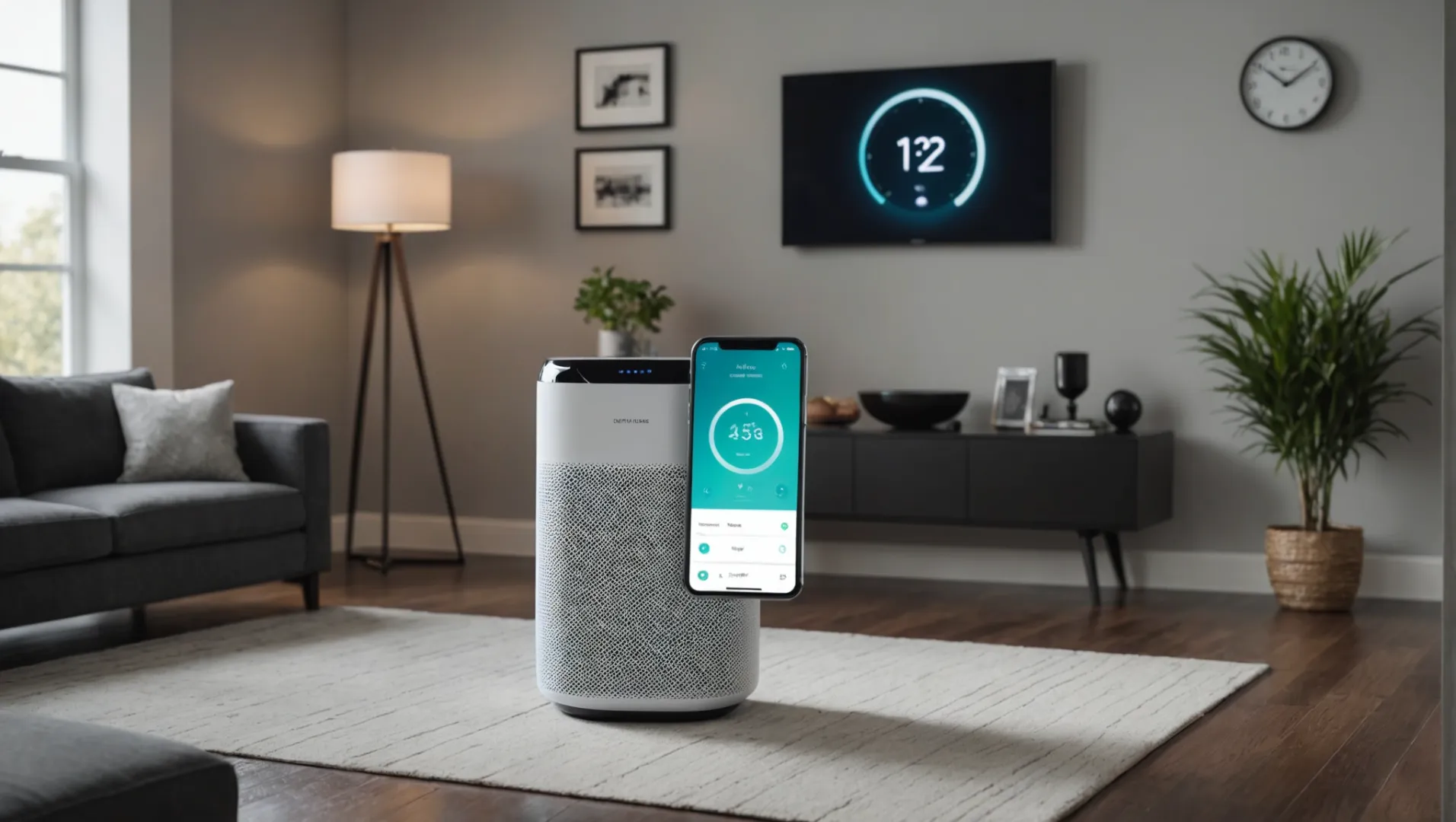
Control continuo de la calidad del aire y recogida de información
IoT ayuda a los purificadores de aire a vigilar la calidad del aire en todo momento y a recopilar datos por periodos. De este modo, las máquinas estudian las tendencias del estado del aire y se ajustan si es necesario. Las personas observan informes detallados en sus teléfonos móviles u otros aparatos, que les muestran detalles sobre los contaminantes de su entorno.
Control desde lejos
Una gran ventaja de IoT es el control desde lugares distantes. La gente maneja sus purificadores de aire con aplicaciones móviles o plataformas en línea desde cualquier lugar. Esta capacidad es útil para cambiar los ajustes cuando no se está en casa o para comprobar si la calidad del aire es buena antes de llegar. También permite cambios automáticos en función de horarios o gustos personales.
Ahorrar energía y dinero
IoT Los purificadores de aire reducen el consumo de energía con acciones inteligentes. Emplean sensores para identificar cuándo es necesario limpiar, de modo que sólo funcionan si es necesario en lugar de funcionar sin parar. Esta función protege la energía, prolonga la vida útil del filtro y reduce los costes de mantenimiento.
| Característica | Beneficios |
|---|---|
| Comprobación continua | Ofrece información actualizada sobre la calidad del aire |
| Control Lejano | Permite el control desde cualquier lugar para mayor facilidad |
| Ahorro de energía | Reduce el consumo de energía y los costes de funcionamiento |
Fácil integración con sistemas domésticos inteligentes
IoT se fusionan sin problemas con otros dispositivos inteligentes como termostatos, iluminación y sistemas de voz. Este enlace permite un control total del entorno del hogar, lo que simplifica el mantenimiento de unas condiciones de vida ideales. Por ejemplo, si aumenta la contaminación, el purificador de aire envía mensajes al HVAC sistema para cambiar la ventilación según sea necesario.
En IoT la tecnología crece, se esperan funciones más creativas en los purificadores de aire, que mejoren nuestro confort y bienestar.
Los purificadores de aire IoT ofrecen monitorización de la calidad del aire en tiempo real.Verdadero
La tecnología IoT ofrece información ininterrumpida sobre la calidad del aire.
El control remoto de los purificadores de aire IoT no es posible.Falso
Las aplicaciones permiten a los usuarios controlar los purificadores desde cualquier lugar.
¿Cómo mejora la IA la gestión de la calidad del aire?
La IA cambia la forma en que gestionamos la calidad del aire al ofrecer opciones más inteligentes y eficaces.
La IA mejora la gestión de la calidad del aire mediante el análisis predictivo, la automatización y el procesamiento de datos en tiempo real, mejorando los entornos de aire interior y exterior.

Análisis predictivo y supervisión en tiempo real
La Inteligencia Artificial (IA) aprovecha el análisis predictivo para prever los cambios en la calidad del aire antes de que se produzcan. Analizando datos históricos y en tiempo real, los sistemas de IA pueden anticipar picos de contaminación u otros cambios en la calidad del aire. Esto permite tomar medidas proactivas, como ajustar la ventilación o avisar a los residentes para que cierren las ventanas.
Por ejemplo, en las ciudades inteligentes, los sensores colocados en las zonas urbanas recogen datos sobre los contaminantes. Los algoritmos de IA procesan estos datos para identificar patrones y predecir futuros niveles de calidad del aire. Más información sobre el control de la calidad del aire urbano1 para entender cómo están aplicando las ciudades estas tecnologías.
Sistemas mejorados de purificación del aire
Los purificadores de aire con IA ajustan automáticamente su funcionamiento en función de la calidad del aire detectada. Estos dispositivos utilizan el aprendizaje automático para adaptarse a entornos específicos y a los hábitos de los usuarios, mejorando su eficiencia y eficacia. Por ejemplo, la IA puede optimizar la velocidad de filtración y el consumo de energía en función de la hora del día o los niveles de ocupación.
Además, la IA puede integrarse con otros dispositivos domésticos inteligentes, creando un entorno cohesionado que responda dinámicamente a las condiciones cambiantes. Por ejemplo, cuando la IA detecta altos niveles de partículas en suspensión, también puede atenuar las luces o ajustar el termostato para mantener el confort al tiempo que purifica el aire.
Soluciones personalizadas para la calidad del aire
La integración de la IA en la gestión de la calidad del aire permite un control ambiental personalizado. Los sistemas de IA pueden adaptar los ajustes de purificación del aire en función de las necesidades de salud, preferencias o actividades individuales. Esta personalización va más allá de la mera purificación del aire; puede incluir el ajuste de la humedad, la temperatura, los niveles de ruido e incluso la intensidad de la luz.
Al recopilar datos de los usuarios a lo largo del tiempo, la IA puede recomendar ajustes personalizados que fomenten el bienestar y la comodidad. Descubra cómo funciona la purificación personalizada del aire2 para conocer mejor estos avances.
Integración con HVAC Sistemas
El papel de la IA en la gestión de la calidad del aire no se limita a los purificadores autónomos. También se extiende a HVAC de edificios y viviendas. Los algoritmos de IA optimizan el rendimiento de estos sistemas, garantizando su funcionamiento eficiente y manteniendo una calidad del aire superior.
Mediante la integración con HVAC la IA permite un enfoque más completo de la gestión de los ambientes interiores. Garantiza una calidad del aire óptima sin sacrificar la eficiencia energética ni el confort. Vea cómo la IA transforma HVAC sistemas3 para más detalles sobre estas innovaciones.
La IA puede predecir los cambios en la calidad del aire antes de que se produzcan.Verdadero
La IA estudia datos pasados y presentes para predecir cambios en la calidad del aire.
La IA no puede integrarse con los sistemas de calefacción, ventilación y aire acondicionado para mejorar la calidad del aire.Falso
La IA mejora el funcionamiento de la calefacción, ventilación y aire acondicionado, mejorando eficazmente la calidad del aire interior.
¿Por qué es importante la monitorización en tiempo real de los purificadores de aire?
El seguimiento en tiempo real de los purificadores de aire permite reaccionar con rapidez a los cambios en las condiciones del aire, protegiendo el bienestar.
La monitorización en tiempo real proporciona información continua sobre la calidad del aire, lo que permite a los purificadores de aire ajustar automáticamente la configuración para un rendimiento óptimo. Esta capacidad garantiza un entorno de respiración constante y seguro, respondiendo rápidamente a los contaminantes y alérgenos.
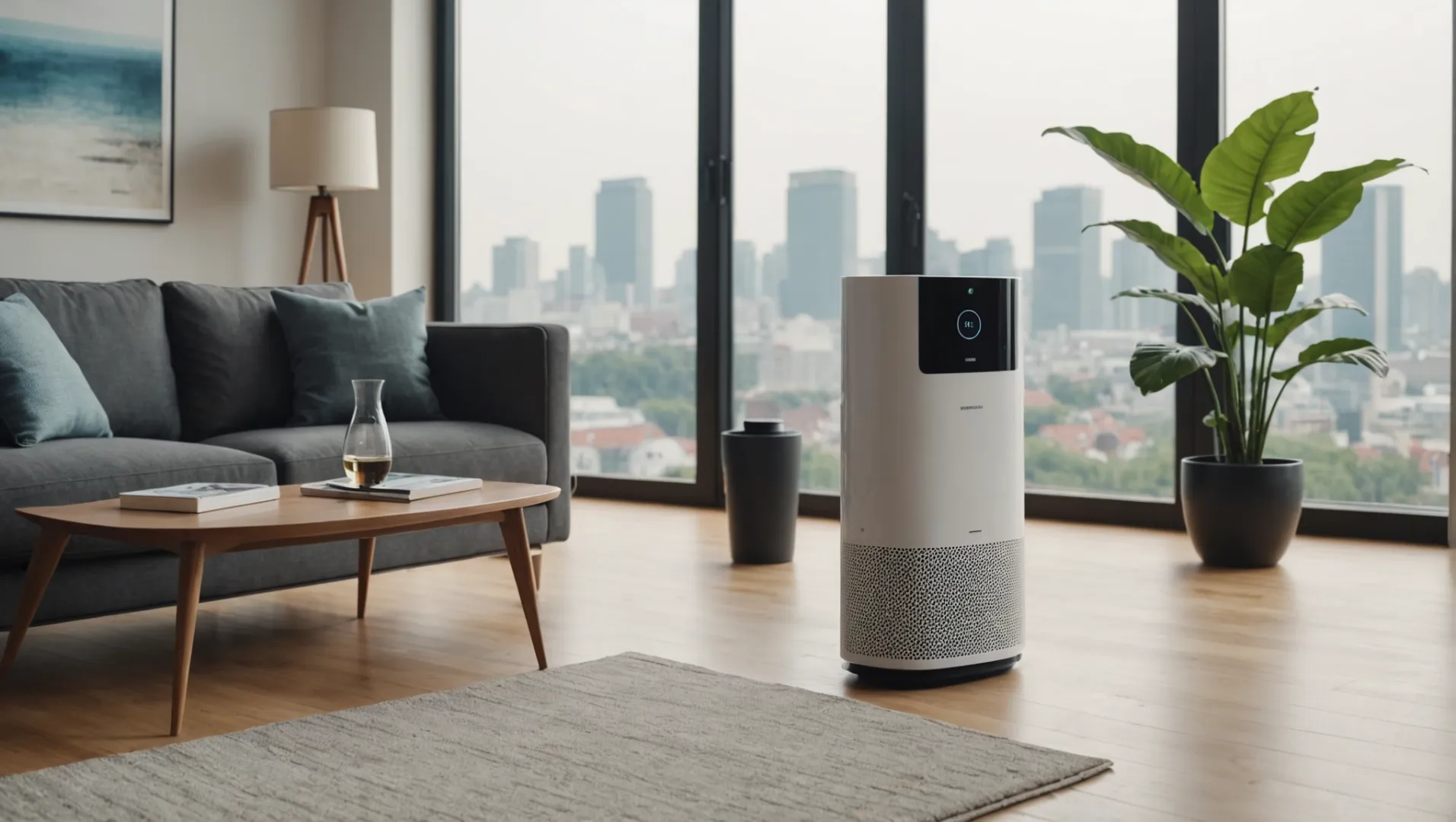
El papel de la observación inmediata
La observación instantánea transforma los purificadores de aire tradicionales en herramientas activas que reaccionan a los cambios en el aire. Al comprobar periódicamente la calidad del aire interior, estas herramientas garantizan que niveles de contaminantes4 se mantienen en niveles seguros y el aire permanece fresco. Esto es especialmente beneficioso en entornos urbanos, donde las condiciones del aire pueden cambiar rápidamente debido a fuentes externas de contaminación.
Mejorar la experiencia del usuario
Los purificadores de aire con controles en tiempo real suelen conectarse a los teléfonos inteligentes, proporcionando a los usuarios información actualizada sobre la calidad del aire en el hogar. Esta función no sólo informa a los usuarios, sino que también les permite controlar el dispositivo a distancia, lo que ofrece comodidad y tranquilidad. Por ejemplo, si las condiciones del aire empeoran debido al humo de la cocina, los usuarios reciben alertas rápidamente y pueden responder incluso cuando no están en casa.
Automatización y ahorro energético
Las comprobaciones inmediatas ayudan a los purificadores de aire a funcionar con mayor eficacia. Ajustan su actividad en función de los datos actuales sobre la calidad del aire, utilizando más energía cuando aumentan los niveles de contaminación y menos cuando el aire es más fresco. Esto garantiza un medio ambiente más limpio a la vez que se ahorra electricidad, ya que el aparato no trabaja en exceso innecesariamente.
| Característica | Beneficio |
|---|---|
| Comentarios | Mantiene la calidad del aire en niveles óptimos |
| Vigilancia a distancia | Ofrece gestión desde cualquier lugar |
| Autoajustes | Favorece el ahorro energético |
Conexión con sistemas domésticos inteligentes
Como parte de las configuraciones domésticas inteligentes, la observación inmediata permite a los purificadores de aire comunicarse con otros dispositivos, creando un entorno unificado. Por ejemplo, si un sensor detecta altos niveles de dióxido de carbono, puede activar un ventilador para aumentar el caudal de aire o ajustar un climatizador inteligente para aumentar el confort. Se espera que esta integración se haga más fluida con tecnologías como Materia5que permite que dispositivos de marcas diferentes cooperen fácilmente.
El futuro sugiere capacidades de observación en tiempo real aún más precisas, con sistemas inteligentes que adapten la limpieza del aire en función de las preferencias personales y las necesidades de salud. A medida que mejoren estas tecnologías, es probable que aumente el papel de la observación inmediata para garantizar tanto la eficacia como el bienestar.
La supervisión en tiempo real ajusta los purificadores de aire automáticamente.Verdadero
La observación en tiempo real permite a los purificadores de aire ajustar la configuración en función de la calidad del aire.
Los purificadores de aire con control en tiempo real ahorran energía.Verdadero
Modifican las actividades en función de la calidad del aire, reduciendo el consumo innecesario de energía.
¿Cómo transformarán los purificadores de aire las innovaciones del futuro?
Los próximos avances en tecnología de limpieza del aire prometen integrarse sin problemas en nuestras rutinas, remodelando el aire que respiramos en nuestro interior.
Las próximas innovaciones en purificadores de aire se centrarán en la integración con sistemas domésticos inteligentes, la personalización impulsada por IA y los diseños invisibles que se mezclan con HVAC mejorar la gestión de la calidad del aire.
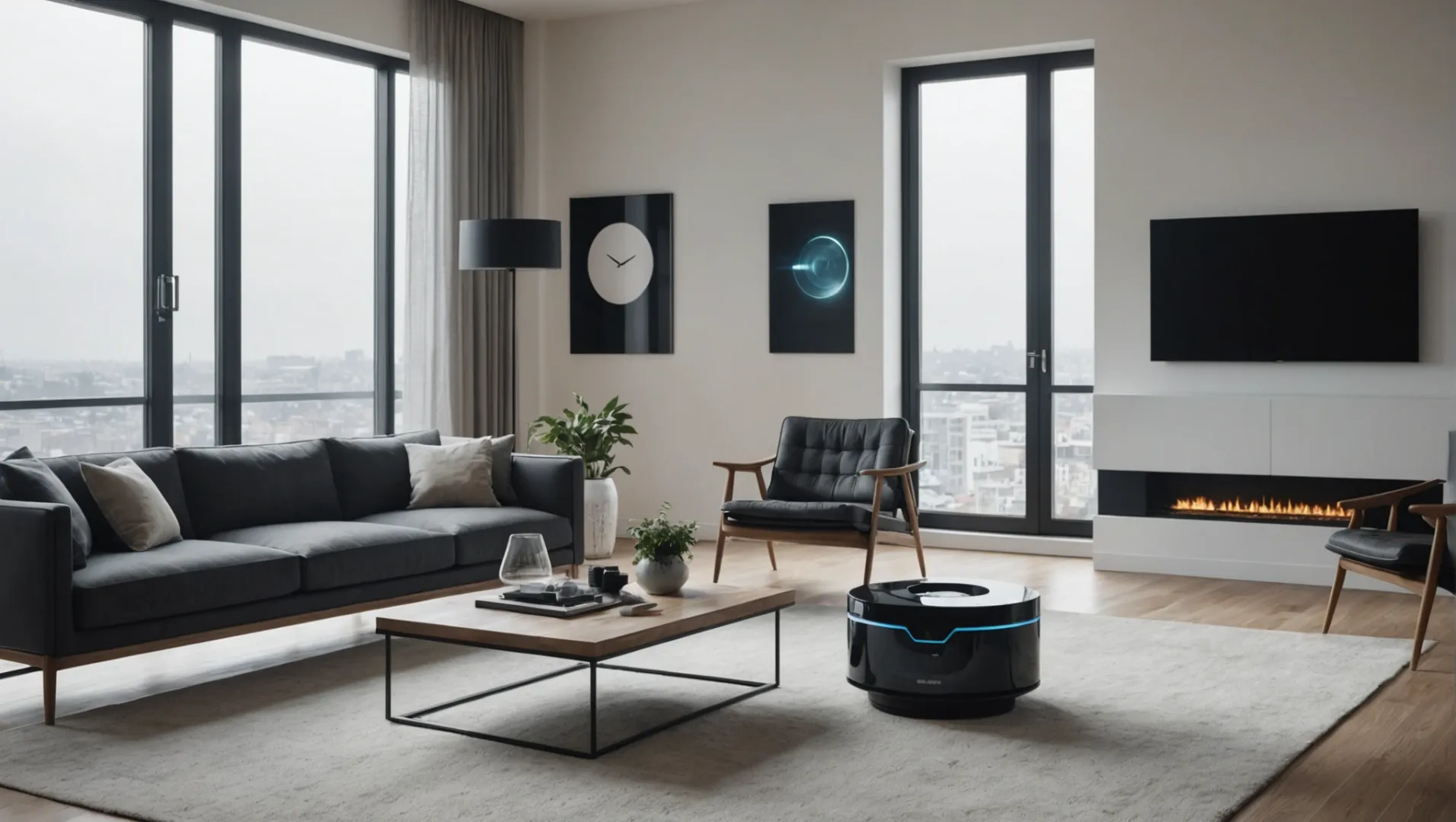
Integración con sistemas domésticos inteligentes
En los próximos años, se espera que los purificadores de aire se unan a los sistemas domésticos inteligentes mediante configuraciones como Matter. Esta configuración permite una comunicación perfecta entre aparatos de varias marcas, garantizando que el purificador de aire pueda interactuar con luces, termostatos y dispositivos de seguridad. Por ejemplo, un purificador podría ajustar automáticamente su configuración en función de los niveles de temperatura y humedad detectados por un termostato, mejorando el confort interior.
Personalización basada en IA
La Inteligencia Artificial (IA) promete aportar un nuevo elemento de personalización a la limpieza del aire. Observando las acciones y preferencias del usuario, los sistemas de IA pueden adaptar los parámetros de calidad del aire a las necesidades personales. Esto implica ajustar la humedad, la temperatura, los niveles de ruido, la intensidad de la luz e incluso la concentración de oxígeno para crear un entorno de bienestar personalizado. Imagine un purificador que no sólo limpie el aire, sino que también cree el ambiente óptimo para trabajar o descansar.
Limpieza de aire oculta
En el futuro, los purificadores de aire podrían dejar de ser unidades independientes y convertirse en partes integradas de HVAC y el diseño de los edificios. Estos cambios pretenden mantener "oculta" la limpieza del aire, proporcionando un aire más limpio sin ocupar espacio ni alterar la estética de la estancia. Al formar parte del tejido del edificio, estos sistemas ofrecen un control continuo de la calidad del aire en todas las zonas.
Comprensión y supervisión avanzadas de datos
Con los avances en IoT y la IA, los próximos purificadores de aire podrían ofrecer una mayor capacidad de comprensión de datos. El seguimiento en tiempo real y las alertas para un mantenimiento temprano podrían convertirse en características estándar, ayudando a los usuarios a gestionar la calidad del aire interior de forma proactiva. Esto puede incluir notificaciones cuando haya que cambiar los filtros o cuando se detecten patrones inusuales de calidad del aire.
Estos innovaciones6 están a punto de cambiar la forma en que percibimos y utilizamos los purificadores de aire, convirtiéndolos en componentes vitales de un hogar inteligente y saludable.
Los purificadores de aire se integrarán con los sistemas domésticos inteligentes.Verdadero
Los futuros purificadores de aire podrían conectarse con sistemas domésticos inteligentes como Matter.
La IA no influirá en los ajustes del purificador de aire.Falso
La IA probablemente personaliza la limpieza del aire según las elecciones del usuario.
Conclusión
IoT y la IA están cambiando la forma de mantener limpio el aire. Acepta estas mejoras para disfrutar de un espacio vital muy saludable.
-
Descubra cómo las ciudades utilizan la IA para el control de la calidad del aire.: CALIOPE-Urban combina la tecnología del modelo regional CALIOPE, el sistema de predicción de la calidad del aire BSC, con un modelo urbano que considera... ↩
-
Comprenda el papel de la IA en la personalización de la purificación del aire.: Monitorización del aire con IA | Limpieza rápida del aire | Sistema ampliable que cambia el juego | Bajo mantenimiento | Modo fragancia | IoT y aplicación gratuita. ↩
-
Conozca el impacto de la IA en la eficiencia de los sistemas HVAC.: La IA aporta notables avances a los sistemas HVAC. Los avances incluyen el análisis inteligente de datos, el mantenimiento predictivo, la optimización energética, la ... ↩
-
Explore cómo la vigilancia de la contaminación en tiempo real mejora la salud y la seguridad.: La vigilancia de la calidad del aire es una herramienta importante para mejorar la calidad del aire, proteger la salud pública y garantizar el cumplimiento de la normativa. ↩
-
Descubre cómo Matter conecta dispositivos domésticos inteligentes sin problemas..: Matter Casting permite transmitir contenidos desde aplicaciones de smartphone compatibles a televisores o pantallas inteligentes, aunque Amazon parece ser la única empresa... ↩
-
Descubra los últimos avances en la tecnología de purificación de aire de última generación.: Una de estas innovaciones es la tecnología de purificación del aire UVGI. UVGI son las siglas de Ultraviolet Germicidal Irradiation (irradiación germicida ultravioleta) y también se conoce como ... ↩


